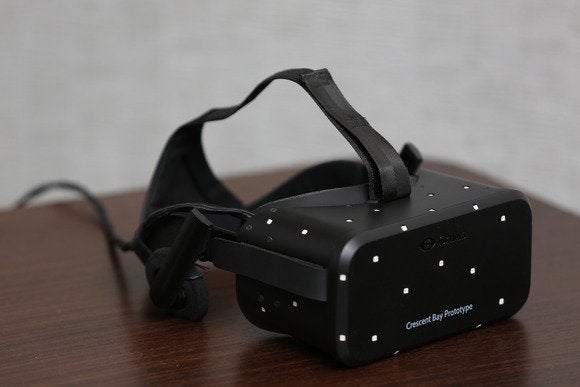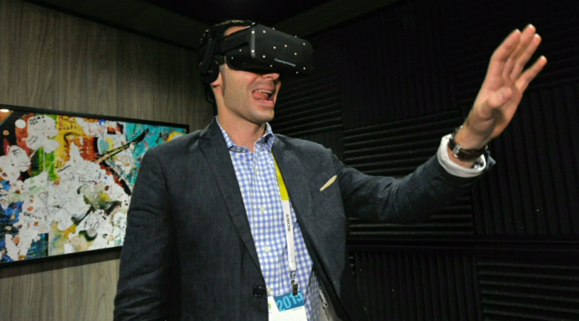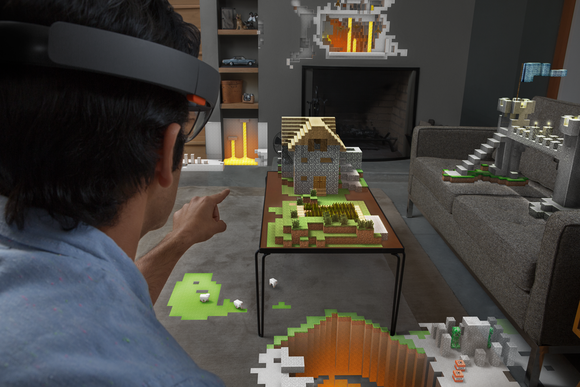
Two years and five iterations of the Oculus Rift later, it’s finally time to start writing about virtual reality as a thing that’s happening, not something that will happen. Less than six months from now the first of the heavy hitter consumer-grade virtual reality sets will hit market—Valve and HTC’s Vive headset—and a few months after that we’ll see the Rift finally do the same.
With that in mind, we thought it was high-time to get back to basics. What is virtual reality? What can you realistically do with it? And for that matter, what’s the difference between augmented reality and virtual reality? What kind of PC will you need to partake? Do you even need a PC at all?
And the most important question: How much is this going to cost?
You’ll find answers to all that and more in this, our beginner’s crash course in virtual reality.
Contents
Seriously, what is virtual reality?
There are a couple ways we can tackle this question. If we go the pie-in-the-sky route, virtual reality’s akin to Star Trek’s Holodeck or the Matrix—a.k.a. a completely virtual environment that you can nevertheless walk around in and interact with.
In the modern era? Well, we’re not quite to the point of transforming energy into matter at will. Current virtual reality (VR) technology is more like strapping a screen to your face. The image is then rendered in stereoscopic 3D and viewed through fancy lenses, tricking you into believing you’re looking at a real environment and not a screen mere inches from your eyes.

The effect is aided by a number of sensors in and/or around the device—gyroscopes, infrared dots, et cetera. These are tracked, allowing what you’re looking at to react when you turn your head, nod, or even lean forward.
Combine photorealistic graphics (or 3D video) with this ability to move around in the virtual space and you’re already pretty damn close to achieving what VR experts term “Presence”—a feeling that you’re actually in the virtual world instead of standing awkwardly in the living room with a headset on. How powerful can the effect be? During an Oculus demo last year an alien waved its hand at me and I instinctively waved my hand back, even though that made absolutely no sense and the “alien” couldn’t see it, nor care.

Right now the primary players in VR hardware are Oculus and Valve/HTC, though there are a number of other independents like Razer and Starbreeze making a stab at the market.
Augmented Reality versus Virtual Reality
Okay, so now we know a bit about virtual reality. What, then, is “augmented reality”? Is that like a parallel universe?
Not quite. Augmented reality is a bit more complex than virtual reality in that it melds computer graphics with the real world. In other words, your view of the world isn’t so much obstructed by an AR headset as it is enhanced.
For an early (and very simplistic) example, let’s talk Google Glass. All Glass did was stick a miniature display in the top-right corner of your field of view. You could walk around like normal, glance up, and see the time or a picture or whatever “floating” in the air above you.
Of course it wasn’t actually floating there—your eye just perceives Glass’s display that way.

And Glass wasn’t even a great rendition of AR, because it was made to hide out in the corner of your vision. Newer AR headsets are focused more on immersion, sitting smack in the middle of your field of view.
Now, the potential for AR is incredibly high—especially for day-to-day life. For instance, my favorite demo so far came by way of Microsoft’s HoloLens kit and was essentially a step-by-step walkthrough on how to change out a lightswitch without electrocuting yourself. You can easily envision a world where people are taught to play an instrument, change their oil, brew beer, or any number of skilled tasks by using AR.
On the other hand, I’ve also written extensively about how I don’t think AR is particularly interesting for traditional linear-storyline gaming purposes—a viewpoint I stand by. I’ve now played games on three different AR headsets and while it’s fun messing around in a sandbox, it’s not the type of game I tend to enjoy best. But for something like Minecraft? It works fine.

The other problem is the technology itself. AR headsets are nowhere near as mature as VR headsets, and we’re probably looking at another five to ten years before they get to the point where the tech is slim and powerful enough to enter mainstream use.
But we’re getting there! The main players in the AR field are Microsoft’s HoloLens set (which I played with at E3) and CastAR, which was made by some ex-Valve employees.
Back to VR. There are basically four main categories of input devices, listed here from worst to best: Mouse and keyboard, gamepad, specialist controls (i.e. flight sticks), and motion controls.
Continue to the next page for information on VR control options and much, much more.
[“source – pcworld.com”]







